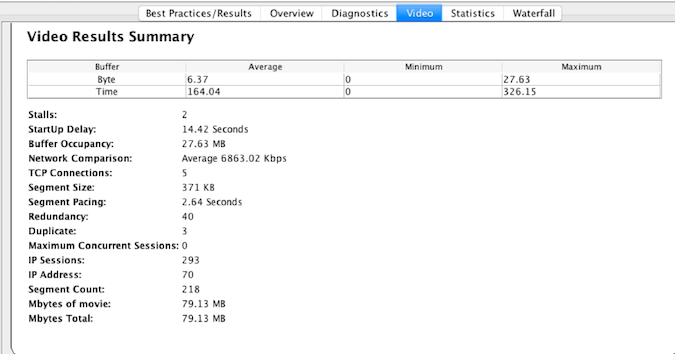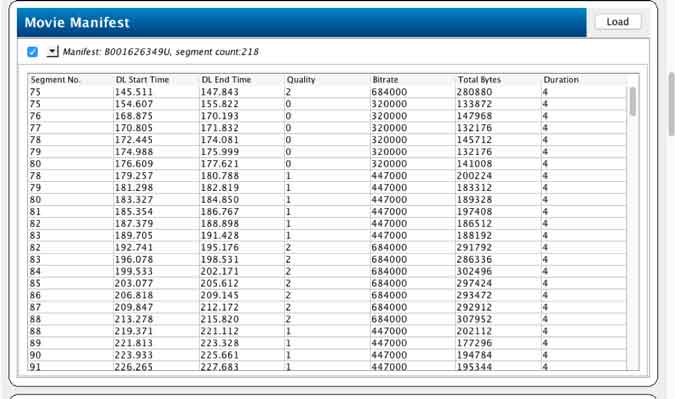What’s new in the release of Video Optimizer 1.2
We are proud to announce the release of Video Optimizer 1.2. This latest version of our open source tool to profile iOS and Android applications and their associated video has valuable new features that help improve network performance of mobile services. The key new features in this release are the new and improved network attenuator, the video tab (with its video parsing engine), and the new preferences window. Learn more about them in this post.
Network Attenuation
Video Optimizer has had an attenuation feature for a while, but this is a completely redone (and much more powerful) feature today. When you are running a trace, you have three attenuation options: None, Slider, and Profile.
When you select None, the tool will not change the network characteristics at all. You are testing with ‘what you have.’

The Slider option will provide a maximum network speed for the entire trace. In the screenshot below, I have specified a downlink throughput of ~5MBPS, and uplink of ~2MBPS. This will, of course, allow you to test your mobile app or video on a network that does not have as much capacity as your home cellular or Wi-Fi network. (Note: It cannot make your network faster than you already have – it can only slow the network speeds.)

The last option is the Profile, and this is really cool. Now, you can create a variable network profile that changes while you are testing. This option is a great way to see how your application or video behaves in a network that has constantly changing conditions (as a passenger on a train might experience).

The profile file is a CSV document with the format:
time (in seconds), downlink KBPS, uplink KBPS
for each line. To notate no slowdown, use the value 102400. The default profile text begins:

This says, for the first 10 seconds, do not attenuate, but at t=10-15, slow the downlink to 12MBPS, and from 15-20, keep the slow downlink and change uplink to 5MBPS.
If your trace runs longer than the profile has allotted, it will start from the beginning again.
Video Tab
The new video tab is full of powerful information about the video transmitted in our mobile application, providing you with the details of what was actually transmitted to your customer. Right below the summary of the trace, there is a summary of video characteristics:

Each individual video will be listed by manifest. In the trace shown below, there is only one video, but more will appear should multiple videos play during a trace.

Clicking the arrow will display data for each segment:

We can see the download times of each segment, the video quality level, the bitrate, byte count, and duration. This table is sortable for all columns and allows you to determine if segments were downloaded in a duplicate manner. For example, segment 823 was downloaded at 189s (quality 1) and again at 196s (quality 2).
Now, if your app’s video is not parsed correctly – we have a video parsing wizard that will allow you to configure Video Optimizer to correctly parse your video. For details on how to use the video parsing engine, look in the user guide, or for a future blog post.
Preferences
Video Optimizer is a highly configurable system, and we are beginning the process of moving all configurable items into one menu – the Preferences menu. We have already moved the ADB path, memory and Best Practices toggle to this, and expect more features to move to the Preferences menu in future releases.
The Best Practices toggle allows you to customize the reporting from Video Optimizer to report only on the BP you are interested in. This simplifies the Best Practices report for faster assimilation in reports.
If you already have a prior version of Video Optimizer up and running, please upgrade to v 1.2 to take advantage of all the new features.
Note: To take trace with iOS devices, Wireshark is now required to read the iOS format into Video Optimizer.
We hope you download the latest release of Video Optimizer, and check out these new features as you profile your mobile video and applications. Let us know what you think, and what other features you’d love to see in our forums.
